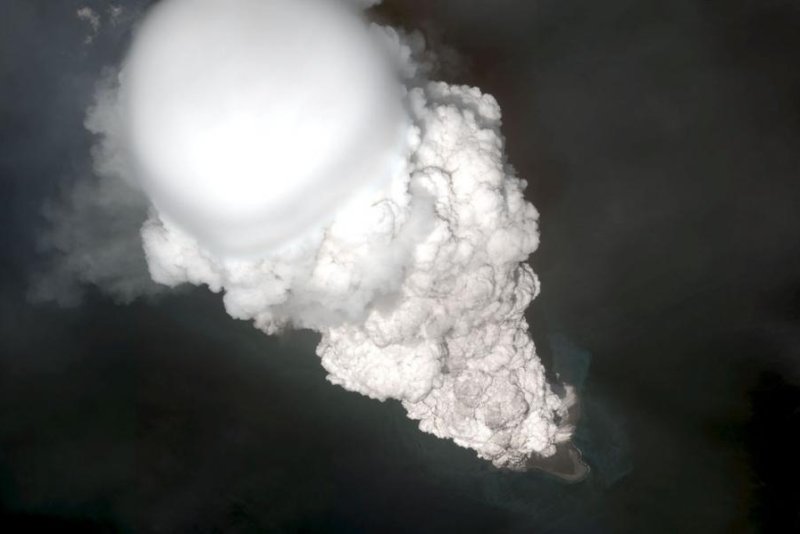A satellite image shows a massive plume of ash rising from the erupting Bogoslof Island volcano on May 28, 2017. Photo by Dave Schneider/Alaska Volcano Observatory & U.S. Geological Survey
March 13 (UPI) -- For the first time, scientists have recorded volcanic thunder.
For eight months in 2016 and 2017, microphones captured the sounds of the volcano on Bogoslof Island, part of Alaska's Aleutian Islands. Analysis of the recordings revealed the crackles of what's known as volcanic thunder.
"It's something that people who've been at eruptions have certainly seen and heard before, but this is the first time we've definitively caught it and identified it in scientific data," Matt Haney, a seismologist at the Alaska Volcano Observatory in Anchorage, said in a news release.
Scientists detailed the recordings in a new paper published this week in the journal Geophysical Research Letters.
During volcanic eruptions, ash, ice, rock and other ejected particles collide. The friction created by the millions of tiny collisions produces static electrical charges strong enough to trigger lightning.
Directly measuring lightning inside a volcanic plume is difficult, but studying the thunder produced by the lightning could offer scientists new insights into volcanic eruptions.
"Understanding where lightning is occurring in the plume tells us about how much ash has been erupted, and that's something that's notoriously difficult to measure," said Jeff Johnson, a geophysicist at Boise State University who wasn't involved in the recent study. "So if you're locating thunder over a long area, you could potentially say something about how extensive the plume is."
Hearing inside a volcanic plume isn't all that much easier than seeing, however, and many scientists believed identifying the sound of volcanic thunder among the many sounds of an erupting volcano was impossible.
But scientists were able to pinpoint the sound of volcanic thunder by comparing their microphone recordings with data fielded by a network of lightning sensors. The characteristics of each strike corresponded with the aural qualities of each thunder crack.
"I expect that going forward, other researchers are going to be excited and motivated to look in their datasets to see if they can pick up the thunder signal," Haney said.















